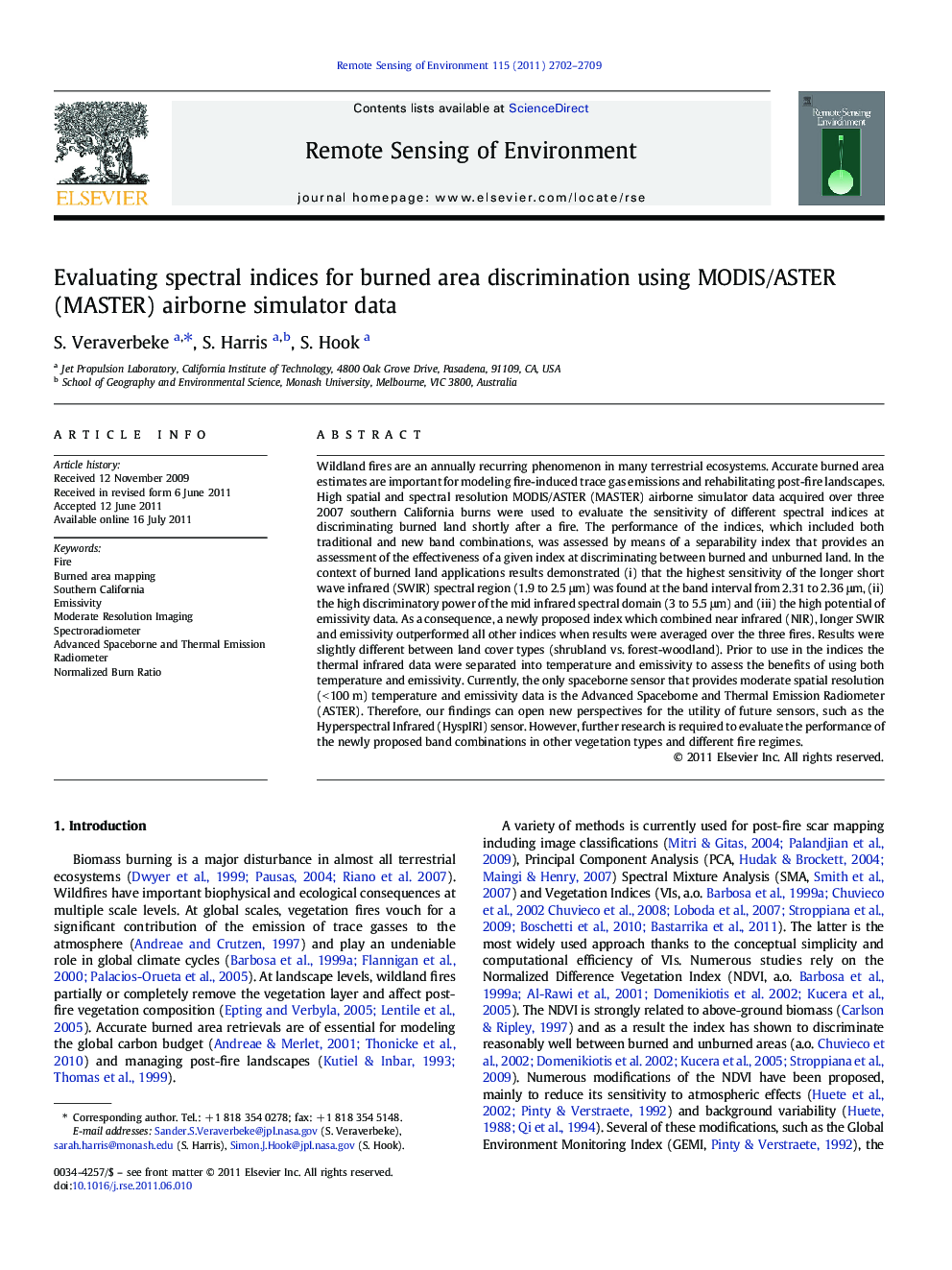| کد مقاله | کد نشریه | سال انتشار | مقاله انگلیسی | نسخه تمام متن |
|---|---|---|---|---|
| 4459315 | 1621287 | 2011 | 8 صفحه PDF | دانلود رایگان |

Wildland fires are an annually recurring phenomenon in many terrestrial ecosystems. Accurate burned area estimates are important for modeling fire-induced trace gas emissions and rehabilitating post-fire landscapes. High spatial and spectral resolution MODIS/ASTER (MASTER) airborne simulator data acquired over three 2007 southern California burns were used to evaluate the sensitivity of different spectral indices at discriminating burned land shortly after a fire. The performance of the indices, which included both traditional and new band combinations, was assessed by means of a separability index that provides an assessment of the effectiveness of a given index at discriminating between burned and unburned land. In the context of burned land applications results demonstrated (i) that the highest sensitivity of the longer short wave infrared (SWIR) spectral region (1.9 to 2.5 μm) was found at the band interval from 2.31 to 2.36 μm, (ii) the high discriminatory power of the mid infrared spectral domain (3 to 5.5 μm) and (iii) the high potential of emissivity data. As a consequence, a newly proposed index which combined near infrared (NIR), longer SWIR and emissivity outperformed all other indices when results were averaged over the three fires. Results were slightly different between land cover types (shrubland vs. forest-woodland). Prior to use in the indices the thermal infrared data were separated into temperature and emissivity to assess the benefits of using both temperature and emissivity. Currently, the only spaceborne sensor that provides moderate spatial resolution (< 100 m) temperature and emissivity data is the Advanced Spaceborne and Thermal Emission Radiometer (ASTER). Therefore, our findings can open new perspectives for the utility of future sensors, such as the Hyperspectral Infrared (HyspIRI) sensor. However, further research is required to evaluate the performance of the newly proposed band combinations in other vegetation types and different fire regimes.
► The discriminatory power of spectral indices to map burned areas is evaluated.
► MODIS/ASTER (MASTER) airborne simulator data is used.
► An index combining SWIR, MIR and emissivity data revealed the best performance.
Journal: Remote Sensing of Environment - Volume 115, Issue 10, 17 October 2011, Pages 2702–2709